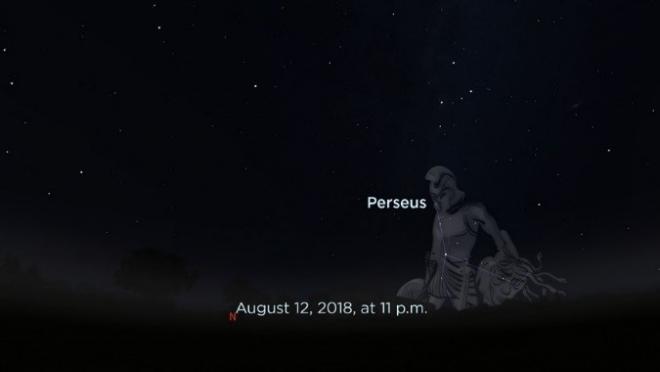Your checklist for viewing the 2018 Perseid meteor shower
August 10, 2018
By Amy Sayle
The annual Perseid meteor shower is underway and is predicted to peak the night of August 12/13, 2018. That’s Sunday evening into very early Monday morning.
Here’s a checklist for getting the most out of your Perseids viewing this year:
1) Know what you’re looking for.
Meteors look like streaks of light in the sky. Although they are sometimes referred to as “shooting stars,” they are not stars. They are caused when small bits of debris in space hit our planet’s atmosphere and heat up.
The Perseid meteor shower happens around this time every year when Earth runs into debris left behind by Comet Swift-Tuttle.
Still not sure what to look for? Come to a Carolina Skies show at Morehead Planetarium and Science Center this weekend, and ask your presenter to simulate a meteor shower.

2) Pick a date and time for your viewing.
The Perseids are already happening. The peak night, when you can expect to see the most meteors (assuming cooperative weather), is predicted to be Sunday evening, August 12 into early Monday morning, August 13, 2018.
Some years, moonlight interferes with the peak date, by washing out the dimmer meteors from view. But not this year. On August 12, 2018, the moon will be a thin waxing crescent, meaning it won’t brighten up the sky and will set soon after the sun.
If you’re viewing earlier in the evening, you won’t see as many meteors overall, but you might get a special treat: seeing a long and slow Perseid “Earth grazer.”
If your goal is to see the most meteors, plan to view at a dark site and do it very early Monday morning, August 13, 2018, before the sky begins to brighten from the approaching sunrise. The Perseid meteor shower will produce roughly an average of a meteor per minute for those watching under a clear dark sky in the hours before dawn on that date.
3) Check the weather forecast.
If it’s going to be overcast or raining, don’t bother trying to view meteors. You might try the couple of nights before and after the peak night if your weather will be better then.
4) Choose your viewing location.
Find a safe dark place away from unshielded lights with an open view of the sky. If you plan to watch from your yard, you might invite the neighbors – and ask them to turn off their outside lights before they head over.
5) Gather your supplies.
To view meteors, you don’t need (or even want) special equipment like a telescope or binoculars. Just your eyes will do.
Consider bringing a blanket, sleeping bag, or reclining chair so you won’t have to crane your neck. Take an extra layer of clothing. Even in August, you might feel chilly when you’re outside for a while and not moving around.
6) Choose a direction to look.
Look toward the darkest part of your sky and away from unshielded lights. The Perseids are called that because they appear to radiate away from the direction of the constellation Perseus, which rises in the northeast and climbs higher over the night. But you don’t need to know how to find Perseus to see the meteors. They can appear in all portions of the sky.
7) Put bright devices away.
Resist the urge to use your phone, tablet, or other lighted devices. In addition to pulling your attention away from the sky, a bright screen interferes with your night vision, preventing you from seeing dimmer meteors when you do look back at the sky.
8) Plan on being outside a while.
It takes your eyes time to adjust to the dark, and meteors can come in clumps, so you might see none for minutes at a time.
While this meteor shower happens once a year, we hold skywatching events year-round. For information about upcoming skywatching sessions check here. We would love to see you at one or two!
